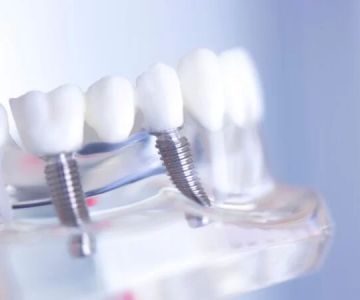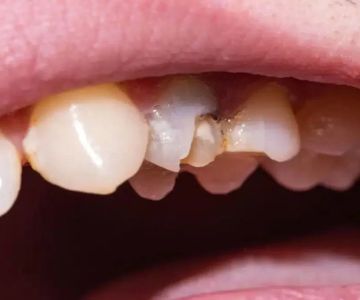- 1-Understanding-Tooth-Sensitivity-After-Whitening
- 2-Common-Causes-of-Post-Whitening-Sensitivity
- 3-Immediate-Steps-to-Relieve-Sensitivity
- 4-Long-Term-Solutions-for-Sensitivity-Management
- 5-Professional-Treatments-and-Dentistry-Advice
- 6-Real-Life-Experience-and-Prevention-Tips
1. Understanding Tooth Sensitivity After Whitening
Many people achieve a radiant smile through teeth whitening but are often surprised by tooth sensitivity that follows. How to stop tooth sensitivity after whitening is a frequent question among dental patients, as the discomfort can range from mild tingling to sharp pain. This sensitivity occurs because whitening agents temporarily affect the tooth enamel and underlying dentin, making nerves more reactive to stimuli such as cold, heat, or sweets.
The key to managing this discomfort lies in understanding its cause and duration. Typically, sensitivity after whitening is temporary and diminishes within a few days, but in some cases, it can persist longer and affect daily life quality. Knowing how to address this issue effectively helps maintain both oral health and the confidence to smile brightly.
2. Common Causes of Post-Whitening Sensitivity
The primary reason for tooth sensitivity after whitening is the penetration of peroxide-based bleaching agents into the enamel and dentin layers. These agents open microscopic pores in the enamel, allowing stimuli to reach nerve endings more easily. Other contributing factors include pre-existing enamel erosion, gum recession, or untreated dental conditions like cavities.
Moreover, overuse or misuse of whitening products—such as leaving whitening strips on too long or frequent bleaching sessions—can exacerbate sensitivity. The acidity of some whitening gels may also weaken enamel temporarily. Understanding these causes is crucial for preventing and treating sensitivity effectively.
3. Immediate Steps to Relieve Sensitivity
If you experience tooth sensitivity after whitening, several immediate steps can help alleviate discomfort. Using toothpaste specifically formulated for sensitive teeth is a widely recommended first step. Ingredients like potassium nitrate or stannous fluoride help block the transmission of pain signals from the tooth surface to the nerve.
Avoiding extremely hot, cold, or acidic foods and drinks during the sensitivity period is also important. Rinsing your mouth with a neutral fluoride mouthwash can strengthen enamel and reduce sensitivity. Additionally, shortening the duration of future whitening sessions or spacing them out more can minimize irritation.
For quick relief, some people use desensitizing gels recommended by dental professionals, which can be applied directly to sensitive areas. These products work by sealing the exposed dentinal tubules that cause nerve stimulation.
4. Long-Term Solutions for Sensitivity Management
To stop tooth sensitivity after whitening in the long run, it’s essential to adopt a holistic oral care routine. Regular use of remineralizing toothpaste and fluoride treatments helps rebuild enamel strength, making teeth more resistant to sensitivity triggers. Avoiding aggressive brushing techniques and using a soft-bristled toothbrush can prevent further enamel wear and gum recession.
In some cases, dental professionals may recommend sealants or protective coatings to shield sensitive areas. Maintaining good oral hygiene and regular dental checkups help detect and treat issues like gum disease or cavities early, which can worsen sensitivity after whitening.
Dietary adjustments, such as reducing consumption of acidic beverages and sugary foods, also contribute to maintaining enamel integrity and reducing sensitivity episodes.
5. Professional Treatments and Dentistry Advice
Dentists offer several professional options to manage and prevent post-whitening sensitivity. In-office fluoride varnish applications can quickly soothe sensitive teeth and enhance enamel resistance. For persistent cases, prescription-strength desensitizing agents or bonding materials may be applied.
Dental professionals at Dentistry Toothtruth emphasize the importance of personalized care plans. They recommend scheduling whitening treatments under supervision to monitor enamel health and adjust protocols accordingly. Professional whitening kits with controlled concentrations also reduce the risk of sensitivity compared to over-the-counter products.
Patients with severe or prolonged sensitivity should seek dental evaluation to rule out underlying problems such as cracks, decay, or gum disease that require targeted treatment beyond whitening management.
6. Real-Life Experience and Prevention Tips
One memorable case involved a patient who experienced intense sensitivity after several home whitening sessions. After consulting with a dental professional, she switched to a sensitive-teeth toothpaste and reduced whitening frequency, leading to a complete resolution within two weeks. Her story highlights how understanding product use and listening to your body’s signals is key to safely enjoying whitening benefits.
Preventing sensitivity starts before whitening. Consulting with dental professionals to assess tooth health, following instructions precisely, and using recommended products can prevent discomfort. Many users find gradual whitening techniques or professional supervision reduces side effects significantly.
For those looking for expert advice and suitable products to manage tooth sensitivity after whitening, Dentistry Toothtruth provides valuable resources and product recommendations tailored to individual needs.







 Westgate Dental Arts
Westgate Dental Arts Coventry Family Dental
Coventry Family Dental Familia Dental
Familia Dental Dr. Daniel S. Fife, DDS
Dr. Daniel S. Fife, DDS Dentistry At Suburban Square: Michael I. Wollock, DMD
Dentistry At Suburban Square: Michael I. Wollock, DMD Comfort Care Dental
Comfort Care Dental The Importance of Oral Health Education During Pregnancy for a Healthy Pregnancy
The Importance of Oral Health Education During Pregnancy for a Healthy Pregnancy Why Skipping Dental Checkups Can Lead to Bigger Oral Health Problems
Why Skipping Dental Checkups Can Lead to Bigger Oral Health Problems Best Tips for Brushing Your Teeth Properly for Healthy Gums: Essential Techniques for Oral Health
Best Tips for Brushing Your Teeth Properly for Healthy Gums: Essential Techniques for Oral Health Advantages of Porcelain Dental Restorations
Advantages of Porcelain Dental Restorations How Can Diabetes Cause Tooth and Gum Problems? Preventing and Managing Oral Health Issues
How Can Diabetes Cause Tooth and Gum Problems? Preventing and Managing Oral Health Issues Healthy Habits for Promoting Good Oral Health and Hygiene: Tips for a Healthy Smile
Healthy Habits for Promoting Good Oral Health and Hygiene: Tips for a Healthy Smile